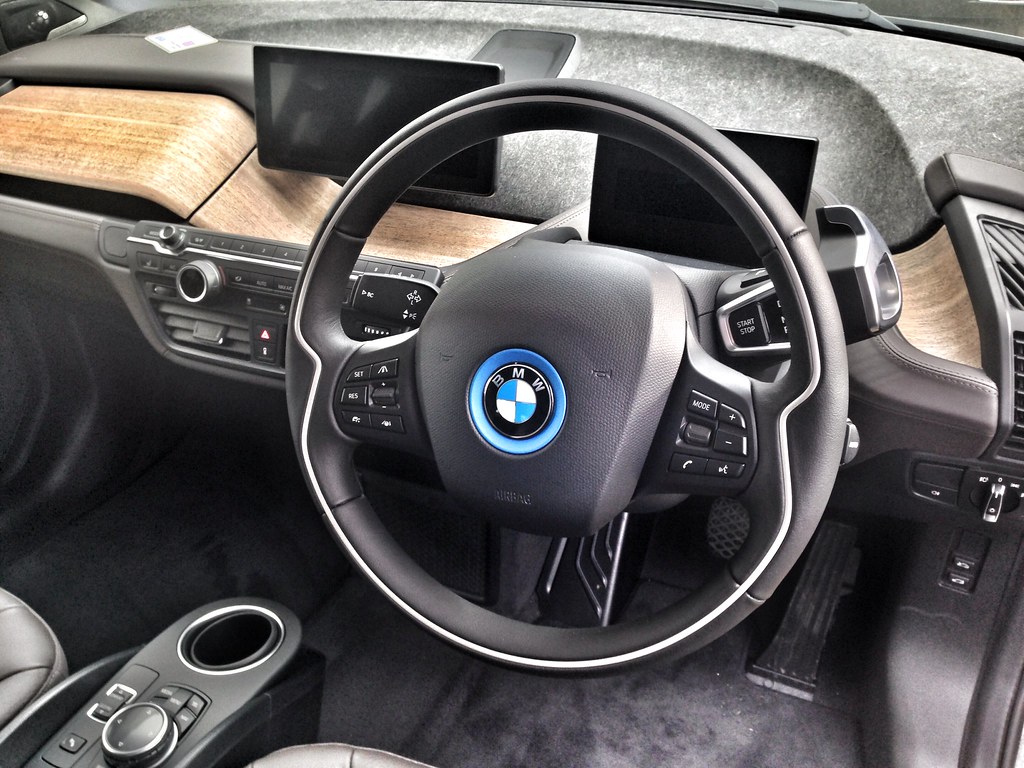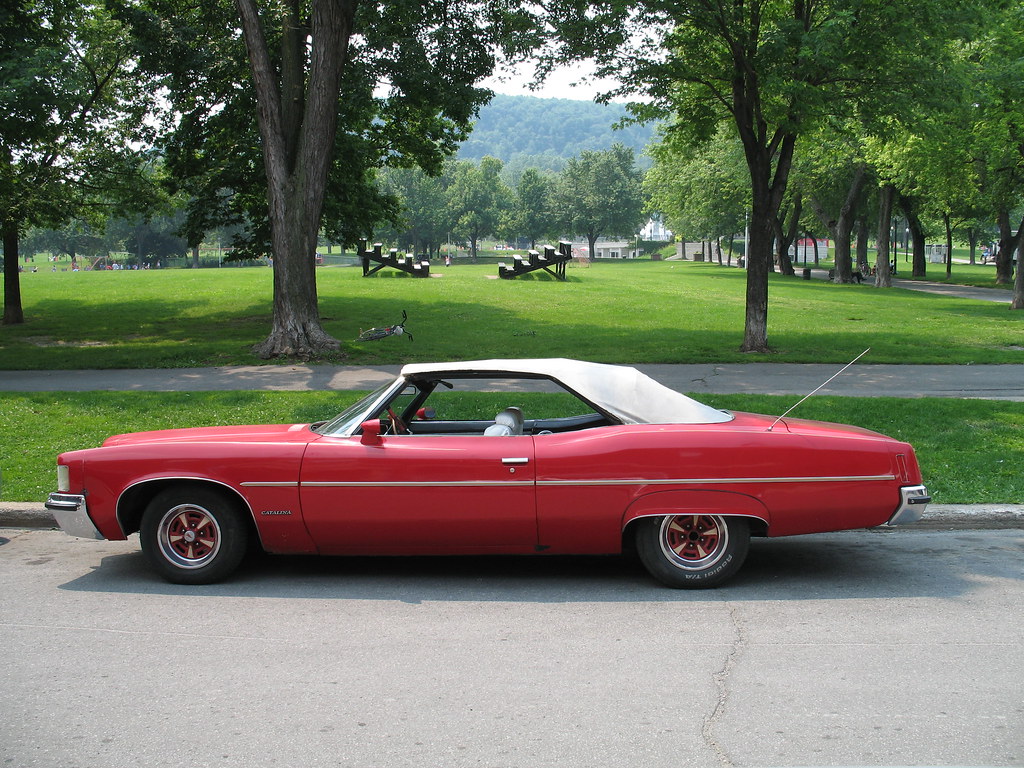
Car leasing has become an increasingly popular option for consumers seeking a new vehicle without the long-term commitment of traditional ownership. In 2023, leased vehicles represented a significant one-fifth of new vehicular purchases, a trend likely driven by factors such as the average nearly 5% interest on 60 months of financing. While leasing offers clear advantages, from lower monthly payments to the opportunity to drive a new car every few years, it remains shrouded in numerous myths and misunderstandings that can deter potential lessees.
These misconceptions often lead individuals to overlook a viable and financially sound transportation solution. Many consumers harbor concerns about hidden costs, rigid terms, and perceived financial waste, largely due to a lack of accurate information. Understanding the true nature of car leasing is crucial for making an informed decision that aligns with your personal and financial circumstances.
Our aim here is to dissect and debunk the most common misconceptions about car leasing. Drawing on factual information and expert insights, we will provide a clear, unbiased, and practical guide designed to empower you with the knowledge needed to navigate the leasing landscape confidently. Let’s delve into these prevalent myths and uncover the realities of car leasing, ensuring you can make the best choice for your automotive needs.

1. **Myth 1: Leasing Requires a Large Initial Deposit**One of the most widespread beliefs about car leasing is that it necessitates a substantial upfront payment, similar to a down payment when purchasing a vehicle. This assumption can be a significant deterrent for many, leading them to believe leasing is an inaccessible option. However, the reality is that the initial payment in a leasing agreement is remarkably flexible and can be tailored to suit an individual’s financial situation, often requiring little to no upfront costs.
Leasing companies frequently offer a range of options, allowing the initial payment to align with your budgetary needs. For instance, the upfront amount can often be equivalent to just three, six, or nine monthly payments. This flexibility means that you can actively work to minimize immediate outlays, making leasing a more accessible and financially manageable choice for a broader spectrum of consumers.
It is important to understand the direct relationship between your initial deposit and your subsequent monthly payments. A larger upfront payment will typically result in lower monthly installments throughout the lease term. Conversely, opting for a smaller initial payment, or even a zero-down lease as offered by some providers, will lead to higher regular monthly costs. This dynamic empowers lessees to balance their cash flow preferences, enabling them to choose between a larger upfront sum for reduced ongoing expenses or conserving immediate capital.
For example, calculations from the U.S. News and World Report car lease calculator illustrate this impact clearly. On an average car cost of $44,700 over 36 months at a 9.89% interest rate with a residual value of $31,290, a zero down payment pushes the total monthly payment to $720. In contrast, with a down payment, this amount drops to $653 per month. This seemingly small monthly difference of $97 translates to an additional $3,492 in payments over the 36-month lease term. While a significant down payment isn’t mandatory to see cost-saving benefits, even a modest one can considerably improve your bottom line, demonstrating the strategic advantage of thoughtful financial planning.
Furthermore, consumers should recognize that they have room to negotiate the initial deposit with the leasing company. Proactively seeking deals that offer low or zero-deposit leasing options, or spreading the cost through a payment plan that suits your monthly budget, are viable strategies. This consumer advocacy approach ensures that you don’t commit to more than you’re comfortable with and can secure terms that genuinely benefit your financial planning.

2. **Myth 2: Leasing is a Financial Waste**The notion that leasing a car is inherently a financial waste, particularly when compared to outright purchasing, is a deeply ingrained misconception for many consumers. This perspective often stems from the idea that ownership always trumps renting, overlooking the distinct financial advantages that leasing can offer in specific situations. The truth is, leasing often proves to be a more cost-effective option, especially for those who prefer driving new vehicles every few years.
Leasing addresses the significant impact of vehicle depreciation, a factor that is often overlooked in traditional buying. When you purchase a car, you bear the full burden of its rapid depreciation, which is most pronounced during the first few years of ownership. Leasing, on the other hand, means you only pay for the vehicle’s depreciation over the term of your lease, typically two to four years. This focus on covering only the value you actually use can result in lower overall costs in the short to medium term compared to owning a vehicle that depreciates rapidly.
Beyond depreciation, leasing offers several compelling financial benefits that challenge the idea of it being a poor investment. One of the primary advantages is the predictability of fixed monthly payments, which greatly simplifies budgeting and financial planning. Unlike purchasing, which often demands a substantial down payment, leasing typically involves lower upfront costs, making newer vehicles more accessible to a broader audience. Moreover, many leasing agreements now incorporate maintenance and service packages, which can significantly reduce unexpected repair expenses and provide invaluable peace of mind regarding vehicle upkeep throughout the lease duration.
Experts in financial planning often advocate for leasing as a strategic choice, particularly for individuals who prioritize driving a new car regularly without the long-term burdens of ownership. Leasing can help maintain liquidity, allowing consumers to allocate capital to potentially higher-yield investment opportunities rather than tying it up in a depreciating asset. This approach empowers individuals to make informed decisions that align with their broader financial goals, moving past the outdated belief that leasing is inherently wasteful.
Considering the current automotive market, where the average non-luxury car can cost around $44,700, and rapid depreciation can erode 12% of a vehicle’s value annually over the first five years, leasing presents an attractive alternative. Add to this the high loan interest rates, which were 7.51% in September 2023, equivalent to over $800 in interest on a $40,000 loan, and the financial prudence of leasing becomes even clearer. For consumers who prioritize driving a new vehicle at its best condition, without the full upfront cost or the long-term financial commitment, leasing often proves to be the economically sensible choice.

3. **Myth 3: End-of-Lease Fees are Unavoidable**A pervasive fear among potential lessees is the belief that end-of-lease fees are an inevitable part of the process, acting as hidden penalties that will always diminish any perceived savings. Many consumers anticipate being hit with unforeseen charges for wear and tear or mileage overages when they return their leased vehicle. However, this is largely a misconception; end-of-lease fees are, in fact, entirely avoidable if lessees proactively adhere to the terms outlined in their lease agreement.
Leasing agreements are explicit in defining what constitutes normal wear and tear versus excessive damage, as well as the agreed-upon mileage cap. Fees typically arise only when a vehicle is returned in a condition that exceeds the defined normal wear or when the mileage limit has been surpassed. By ensuring the car is maintained in good condition throughout the lease term and meticulously tracking mileage, lessees can effectively prevent unexpected charges at the conclusion of their contract.
Avoiding end-of-lease fees requires a proactive and informed approach. A key strategy is to schedule a pre-return inspection with the leasing company. This allows any potential issues that might incur fees to be identified and addressed beforehand, giving you the opportunity to make repairs at a potentially lower cost than what the dealership might charge. Furthermore, consistently monitoring your mileage is crucial. Keep a close eye on your driving habits to ensure you remain within the agreed-upon annual mileage limits, thus circumventing costly overage penalties.
Diligent vehicle maintenance is another critical aspect of avoiding end-of-lease penalties. Following the manufacturer’s recommended service schedule ensures the car remains in optimal condition. Neglecting routine maintenance or delaying necessary repairs can lead to issues that classify as excessive wear. According to a MarketWatch survey, many drivers delay maintenance, leading to financial hardship. Dealerships will perform an inspection upon return, checking for cleanliness, fluid levels, tire pressure, oil changes, and overall condition. While acceptable wear and tear are allowed, issues like tires worn down to less than 3mm of rubber, scrapes over an inch long, interior burns or tears, or any unauthorized vehicle upgrades are likely to incur charges.
Therefore, understanding your lease agreement from the outset, coupled with proactive vehicle care and mileage management, empowers you to navigate the end-of-lease process without additional financial burdens. These steps allow lessees to fulfill their contractual obligations efficiently and return their vehicle confidently, free from the specter of unavoidable fees.

4. **Myth 4: Leasing Limits Mileage Excessively**Another common concern that deters consumers from leasing is the belief that mileage limits are excessively restrictive, forcing drivers to constantly worry about exceeding their allowance and incurring costly penalties. This misconception suggests that leasing is only viable for individuals with very low driving needs, a constraint that many find impractical. However, this view overlooks the inherent flexibility within modern leasing agreements, which are designed to accommodate a wide range of driving patterns.
In reality, mileage limits in leasing agreements are not as rigid as often perceived; they are typically designed to match standard driving patterns and, critically, can be adjusted to suit individual needs. Leasing companies understand that drivers have diverse lifestyles, and therefore, they offer various mileage plans. This allows lessees to select a plan that best aligns with their anticipated annual driving, ensuring that the limits are appropriate for their specific usage requirements.
For those who anticipate driving more than the standard allowance, which is typically up to 15,000 miles per year, higher mileage limits can often be negotiated at the very beginning of the lease term. This upfront negotiation can be a cost-effective way to secure more miles at a lower rate than the penalty charges for exceeding an initial, lower limit. Some leasing companies even offer “unlimited mileage car lease” options, specifically catering to high-mileage drivers and providing complete freedom from overage concerns. This flexibility truly ensures that drivers are not unduly restricted and can tailor their lease to their specific usage patterns without constant worry.
It is true that exceeding agreed mileage incurs charges, but these fees are generally reasonable and are clearly outlined in the lease agreement, often around $0.18 to $0.30 per additional mile. For example, driving an extra 1,000 miles beyond a 36,000-mile lease might incur a charge of $180 to $300. The U.S. Department of Transportation reported average annual miles driven by US motorists as 13,476 in May 2022, with men averaging 16,550 miles and women 10,142 miles. Knowing these averages, and calculating your own estimated mileage (e.g., weekly miles x 52 weeks), allows you to make an informed choice between a standard or a high-mileage lease.
Moreover, it is crucial to recognize that the cost of high mileage isn’t exclusive to leasing. When a financed vehicle accumulates a significant number of miles, its market value depreciates more rapidly. This means that if you choose to trade in or sell a purchased car with high mileage, it will be worth considerably less, effectively costing you more in lost equity. As CarFax notes, the “tipping point” for vehicle depreciation is around 10,000 miles a year, after which routine wear and tear truly begin to affect a vehicle’s value. Thus, whether you lease or buy, high mileage inevitably leads to increased costs, making the flexibility offered in lease mileage plans a significant advantage.

5. **Myth 5: Leasing is Complicated**The perception that car leasing is an overly complex process, filled with bewildering jargon and convoluted terms, is another common misconception that can intimidate potential lessees. Many individuals shy away from leasing because they believe it requires a deep understanding of intricate financial mechanisms and legalistic contracts. However, this belief often overstates the complexity; in reality, leasing can be quite straightforward, thanks in large part to the efforts of reputable leasing companies that prioritize transparency and customer education.
Leasing companies are typically adept at simplifying the process, striving to clearly explain all terms and conditions to their clients. Their goal is to ensure that lessees fully understand their obligations and the benefits of their agreement. This commitment to transparency is designed to make the leasing experience hassle-free and manageable for most consumers. With expert guidance and a structured approach, navigating a lease agreement becomes far less daunting than initially imagined, allowing individuals to feel confident in their choices.
However, while leasing companies simplify the process, it remains crucial for consumers to actively engage in understanding the lease terms themselves. Key aspects such as mileage limits, maintenance responsibilities, and end-of-lease conditions are not merely technical details; they carry significant financial implications. Being well-informed about these elements empowers lessees to make educated decisions, proactively avoiding any unexpected costs or misunderstandings that could arise later in the lease term. This knowledge is your greatest asset in maximizing the benefits of leasing while faithfully adhering to your contractual obligations.
To demystify the process further, it’s beneficial to familiarize yourself with some essential leasing terminology. The ‘Residual Value’ refers to the estimated value of the car at the end of the lease term, a critical factor in determining your monthly payments. The ‘Money Factor’ acts as the interest rate on the lease, directly influencing the finance charge. The ‘Capitalised Cost’ is the agreed-upon price of the car at the start of the lease, which is often negotiable. The ‘Lease Term’ defines the duration of your agreement, typically ranging from 24 to 48 months. Finally, a ‘Disposition Fee’ is a charge often incurred at the end of the lease to prepare the car for resale.
Understanding these core terms not only enhances your comprehension of the lease agreement but also significantly strengthens your position during negotiations. Knowing the meaning of terms like ‘mileage allowance’ and ‘Gross Capitalized Cost’ (which is related to the Capitalized Cost) will allow you to sound assertive and demonstrate that you are well-informed. This preparation allows you to engage effectively with dealers, ensuring that the terms you agree to are fair, understood, and ultimately align with your financial goals, transforming a seemingly complex process into a manageable and empowering transaction.
Read more about: 14 Unmissable Secrets of TG777 c That’ll Blow Your Mind (and Boost Your Wins!)

6. **Myth 6: You Must Purchase the Car at Lease End**One of the most common misconceptions about car leasing is the belief that lessees are obligated to purchase the vehicle once the agreement concludes. This idea can be a significant barrier for consumers who appreciate the flexibility of driving a new car without the long-term commitment of ownership. However, the reality is that purchasing the car at the end of a lease is entirely optional; lessees typically do not have to buy the vehicle.
When a lease term concludes, lessees have several clear choices, none of which strictly mandate purchasing the vehicle. The most straightforward option is to simply return the car to the leasing company, provided it is in good condition and within the agreed mileage limits. This return process is designed to be hassle-free, allowing consumers to walk away without any further financial obligations or the burden of reselling a depreciated asset.
Beyond returning the vehicle, lessees can also choose to renew their current lease, start a new lease with a different vehicle, or, if they desire, purchase the car. The purchase option usually involves paying the car’s predetermined residual value, which is agreed upon at the beginning of the lease. This range of alternatives provides significant flexibility, enabling individuals to make decisions that best align with their current financial situation and personal preferences.
Read more about: Remember the ’90s? These 11 Unkillable Economy Sedans Were the Absolute Albums of Reliability and the Commute.

7. **Myth 7: Leasing Lacks Flexibility**Contrary to the persistent myth that car leasing offers rigid, unyielding terms, the truth reveals a remarkable degree of flexibility designed to cater to diverse consumer needs. Many potential lessees shy away from leasing, fearing they will be locked into an inflexible contract, unable to adapt to life’s inevitable changes. However, modern leasing agreements are quite adaptable, allowing for extensive customization and adjustments.
Leasing allows lessees to tailor various aspects of their agreement right from the outset. This includes choosing the lease term, which can range from 24 to 48 months or more, and selecting mileage limits that accurately reflect their anticipated driving habits. This ability to customize ensures that drivers are not confined to a one-size-fits-all solution, making leasing a practical option for a wide spectrum of consumers, whether they need a short-term commitment or plan for longer use.
Furthermore, the flexibility extends to the possibility of making adjustments during the lease term, though some changes may incur fees. Should circumstances evolve—perhaps a change in commuting patterns or an alteration in financial status—lessees can often renegotiate terms like mileage limits or even the lease duration. This adaptability is invaluable for those whose needs change over time, allowing them to modify their lease to better suit their current lifestyle without necessitating a complete overhaul of their transportation solution.
A significant advantage of leasing’s flexibility is the option to upgrade to newer models or different vehicles at the end of a lease, or even during it via a lease transfer, as mentioned in the context. Many agreements also include the ability to incorporate maintenance packages, which add convenience and predictability to ongoing costs. This comprehensive approach to flexibility ensures that leasing remains a dynamic and responsive choice for vehicle acquisition.

8. **Myth 8: Leasing is Only for Those with Excellent Credit**A prevalent concern for many considering car leasing is the belief that only individuals with excellent credit scores qualify. While a strong credit history certainly facilitates the leasing process and can secure more favorable terms, it is not an absolute prerequisite. Leasing companies typically assess an applicant’s overall creditworthiness, considering factors beyond just the credit score, such as income stability and employment history, to gain a comprehensive understanding of their ability to make consistent payments.
For individuals with less-than-perfect credit, specialized leasing companies and programs exist that aim to accommodate them. These options might involve higher interest rates or a larger initial deposit to mitigate the perceived risk for the lessor. However, they provide a valuable pathway for those with lower scores to still access the advantages of leasing, including the opportunity to drive a new car with predictable monthly payments and often included maintenance. According to Experian, while there’s no official minimum credit requirement for an auto lease, a lower score might necessitate a larger down payment or higher monthly installments.
Moreover, leasing can serve as an effective tool for improving one’s credit score over time. By consistently making timely payments throughout the lease term, individuals can build a positive payment history, which is a critical component of credit score enhancement. This gradual improvement in creditworthiness can lead to more favorable terms in future leasing or financing agreements, transforming leasing into not just a transportation solution but also a strategic financial instrument.
It’s a proactive step for any potential lessee to know their credit rating before approaching a dealership. Soft credit checks, available through banks or third-party apps, can provide this information without impacting your score. This preparation empowers you to understand your position, allowing you to address any credit score issues beforehand or negotiate more confidently, rather than being surprised by terms that might defeat the purpose of leasing in the first place, as advised in the context about “Not checking your credit before leasing.”

9. **Myth 9: Leased Cars Require Special Insurance**Many consumers mistakenly believe that leased vehicles demand a unique or “special” type of insurance coverage, adding another layer of perceived complexity and cost to the leasing process. In reality, leased cars require standard comprehensive and breakdown insurance, much like any other financed or owned vehicle. These policies are designed to protect against common risks such as theft, damage from accidents, and other unforeseen incidents, ensuring the vehicle is adequately covered.
While the core insurance requirements are standard, leasing companies do specify minimum coverage levels that lessees must maintain. These often include comprehensive coverage, collision coverage, and typically, gap insurance. Gap insurance is a crucial consideration for leased vehicles because it covers the financial “gap” between the car’s actual cash value (ACV) at the time of a total loss (e.g., theft or severe damage) and the remaining balance owed on the lease. Without it, lessees could be responsible for a substantial amount out of pocket if the vehicle’s depreciation outpaces insurance payouts.
Understanding your insurance options before signing a lease is paramount. The national average for car insurance stands around $2,008 per year, or $167 per month, as per the context. Lessees should shop around to ensure they are covered by reputable providers offering competitive rates and excellent service. Companies like State Farm and Geico are frequently cited for their customer service and budget-consciousness, while USAA is recommended as the best choice for active military vets and their families, according to the provided information.
The importance of gap insurance cannot be overstated for leased vehicles. Its value is particularly evident if the actual cash value of the vehicle drops below the remainder of your lease. Even if a dealer doesn’t explicitly require gap insurance but offers it, thoroughly considering this extra layer of protection is a wise decision to safeguard your financial interests throughout the lease term.
Read more about: Dust, Rust, and Riches: Unearthing the 15 Most Valuable Barn Finds in Automotive History

10. **Myth 10: Leased Cars Cannot be Taken Abroad**The idea that leased cars are strictly confined to domestic borders is a common misconception that can deter individuals who frequently travel internationally or reside near border regions. Many believe that taking a leased vehicle across national lines is either prohibited or exceedingly complicated. However, with proper planning and adherence to specific guidelines, international travel with a leased car is indeed possible, offering lessees continued freedom and mobility.
To facilitate international travel with a leased vehicle, several arrangements typically need to be made. This primarily involves securing international insurance coverage that extends to the countries you plan to visit. Additionally, it is crucial to obtain any required permits or specific documentation from the leasing company itself, as they remain the legal owner of the vehicle. These steps are essential to ensure compliance with foreign traffic laws and to guarantee that you are adequately covered in the event of an incident while abroad.
While permissible, international travel with a leased vehicle does come with certain limitations and considerations that lessees must be aware of. These might include restrictions on the maximum duration of travel outside the country or specific exclusions for certain nations due to insurance or legal complexities. It is always advisable to notify your leasing company well in advance of any international travel plans and to thoroughly review the road rules and regulations of your destination country to ensure a safe and compliant journey.
Having meticulously debunked these ten prevalent myths, it becomes clear that car leasing is far from the complex, restrictive, or financially wasteful option it is often perceived to be. Instead, it presents itself as a flexible, affordable, and remarkably convenient transportation solution designed for a wide array of consumer needs. From tailoring initial deposits and adjusting mileage limits to understanding end-of-lease options and navigating insurance requirements, the leasing landscape is far more transparent and accommodating than many realize. By embracing the truths revealed here, consumers are empowered to make informed decisions, transforming what was once a source of apprehension into a pathway for hassle-free and cost-effective vehicle access.



